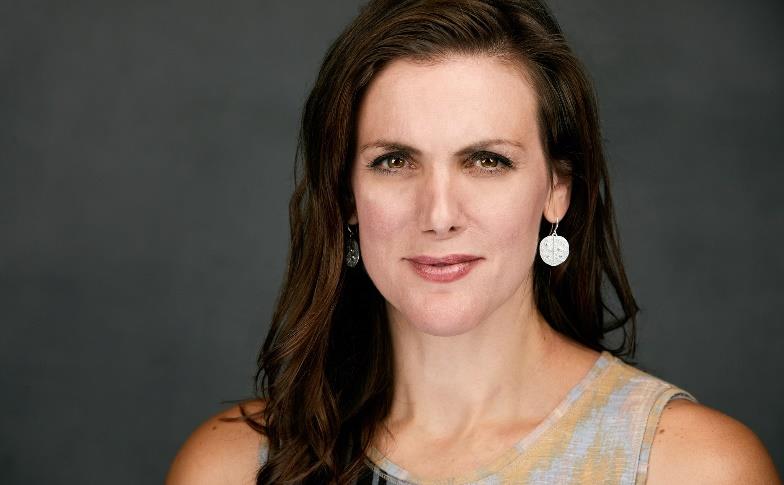Category Archives: Entrepreneurship
A 12-Point “Organizational Survival” Checklist for Upper Management
by Salene Mazur Kraemer, Esquire, MBA, Certified Turnaround Analyst, Board-Certified Business Bankruptcy Law Specialist

image source: https://www.cio.com/article/2439314/change-management-change-management-definition-and-solutions.html
“The only thing that is constant is change”- Heraclitus
To pivot is to rotate, swivel, revolve, spin. Change course. Can your company change course in response to setbacks and an ever-changing business landscape?
Look at retail. With the surge of online shopping, the rise of Amazon, and declining mall traffic, the retail industry has been decimated. Social media addicted teens no longer hang out at malls for social connection. A viral Instagram picture of a celebrity sporting a designer’s hat can spawn a new trend, not a retail storefront. Indeed, the Internet, IPhone apps and social media have forever changed the American retail experience. Some beleaguered retailers should have changed their business models to escape the fate of liquidation. But how?
As a business and bankruptcy attorney and turnaround consultant, I have long been a student of consumer trends and industry movements, and I regularly subject a client’s business model to rigorous examination. Filing a chapter 11 bankruptcy petition is usually the strategic last resort choice. In the plan process, a debtor must disclose why it filed and the factors leading up to the filing. A debtor must also demonstrate that a plan is “not likely to be followed by the liquidation, or the need for further financial reorganization”. See 11 U.S.C. § 1129(a)(11) (in part).
No C-Suite executive wants his or her business to be snuffed out, whether overnight or over the long-haul, by an innovation, competitor, or regulatory change. “Organizational decay” is the slow deterioration of a firm’s operations caused by the inability to change and adapt to shrinking financial resources, profitability and market demand. Don’t let this happen to you. Based on my experience and recent research of “stories” behind Chapter 11 filings, I developed this 12-point “organizational survival” checklist for upper management.
1. Environmental Adversity. The C-Suite should be able to identify with specificity, external opportunities and threats, such as general and regional economic, employment, competing and industry conditions. An economic downturn or market crash impacts interest rates and spending for technology, real estate, and advertising, to name a few. With the rise of the internet, competition can be fatal. Instead of a five-mile radius, businesses must now compete with national and international companies online.
Keep a close eye on new entrants. How low are barriers to entry? Jamba Juice, the quick stop for squeezed juices and smoothies, was pushed out by the pop up of several healthy fast-food new entrants. Consider also Pebble, a Silicon Valley startup that beat Apple in creating and launching the smartwatch in 2012. Pebble eventually lost the market completely when Apple released its watch in April of 2016. Witness how the “athleisure” (wearing casual athletic clothing to places other than the gym) marketplace has become increasingly crowded with the entrance of big-box retailers who offer cheaper prices (i.e., Wal-Mart and Target); the competition and price pressure has forced various retail outlets., i.e., Sports Authority, to buckle.
2. Finance. Cash is king. Gauge your company’s current and future ability to obtain short or long-term financing and meet financial performance requirements. Look at your balance sheet. Are you overleveraged? How liquid are your assets? A viable firm should have a strong enough cash flow to support operations and recover the fair value of long-lived assets. Consider how long it takes for your firm to recognize revenue. Do not ignore open tax matters. Period.
3. Supply Chain. Review the firm’s ability to obtain trade credit. What is your firm’s plan B if there is a threat of disruption to your supply chain.
4. Sales. Do not ignore your sales figures. Has there been a material (5% or more) drop? Price competitively and be able to articulate your competitive edge or “unique selling proposition”. Outline and implement growth initiatives. Analyze which product lines or services are making you the most net profit.
5. Operations. Execute cost-cutting initiatives. Renegotiate lease obligations, the cost of raw materials, or client contracts.
6. Labor. A healthy company will attract and retain knowledgeable, motivated, productive and skilled labor. Be aware of the need to communicate openly and demonstrate a continued concern for employees.
7. Leadership. Ineffective leadership is one of the most significant causes of business failure. Well-connected, competent and trustworthy leaders must create the agenda for change and build an implementation environment. Avoid in-fighting and scapegoating.
8. Technology. Can a new invention shut down your business? With the advent of digital cameras, SD Cards and USB cables, technology killed Kodak. Will a new phone app push you out? Publicly-traded Rosetta Stone cornered the learn-a-new language market for years. In 2012, however, the internet and the iPhone began providing alternatives and Rosetta’s annual profit plummeted.
9. Customer Mix and Behaviors. A secure firm diversifies its client mix. Savvy upper management constantly monitors a customer’s buying habits. Products or services must remain relevant. My use of my iPhone has made items in my home obsolete (i.e., an answering machine, a landline phone, an alarm clock, workout dvds, paperback books, CDs, and even a guitar tuner).
10. Location. Scrutinize location choice. How can you increase customer traffic and ultimate conversion? You may need to selectively shrink your footprint. Do what auto dealers have been doing; use showrooms, and order new inventory online at the point of sale.
11. Marketing. Is there a positive brand perception and recognition with staying power? Engage in the goldmine of social media.
12. Law. Are you compliant with industry and trade regulations and rules? Do you anticipate regulatory or legislative change? How likely is potential future litigation?
***
One of my favorite places to be is Starbucks, a company that “sells human connection.” In a podcast interview with Alec Baldwin, CEO Howard Schultz describes the up and coming, two-level, Disney-like, experiential, Starbucks stores. “We have to keep reinventing, keep dreaming. You cannot embrace the status quo of running a business today.”
So I urge you, be prepared for change. Keep reinventing. Adapt to change and overcome.
The University of Pittsburgh Institute for Entrepreneurial Excellence Celebrates 20 Years of Empowering Local Entrepreneurs!
By: Justin A. Saporito, MAZURKRAEMER Law Clerk
Founded in 1993 and run out of the University of Pittsburgh Joseph M. Katz Graduate School of Business, the University of Pittsburgh Institute for Entrepreneurial Excellence (IEE) began with a $300,000 grant and the mission of being the “innovative leader of economic renewal and growth serving enterprising people and businesses in the region.” In pursuit of this mission the IEE utilizes a dynamic approach of programs and services including monthly workshops, customized consulting, social initiatives, educational programs, professionally-led peer forums, and social events.
This dynamic program has led the IEE to grow to $3 million in annual revenue and the annual serving of hundreds of businesses through its seminars, customized consulting, and millions of dollars in raised capital and revenue. Last year alone the IEE served 824 businesses, helped create 39 startups, raised $10.7 million in capital, increased $14.4 million in revenue for clients, and educated more than 1,400 business leaders through 56 programs and seminars. (according to its 2012 Community Impact Report)
The IEE provides its services through its 8 institute centers and programs. These centers/programs consist of Agricultural Entrepreneurship, a 12-month Entrepreneurial Fellows Program, the Family Enterprise Center, the Information Technology Program, PantherlabWorks, the Small Business Development Center, Student Entrepreneurship program in conjunction with Katz School of Business, and the Urban Entrepreneurship Program. For more information about these programs please click here. To take advantage of one or more of these programs an individual or firm must become an IEE member. Membership includes benefits in addition to participation in IEE programs. For more information about membership please see the IEE’s membership brochure or contact the IEE’s membership director Shelley Taylor.
For more information about the IEE please visit their website at http://www.entrepreneur.pitt.edu.
The Chatham University: Center for Women Entrepreneurship, Assisting Women Entrepreneurs Since 2005
By: Justin A. Saporito, MAZURKRAEMER Law Clerk
Founded in 2005, the Chatham University: Center for Women Entrepreneurship was founded in 2005 with the mission is to educate, create economic opportunities, and foster entrepreneurial thinking for women entrepreneurs and business managers in all stages of business and students. Through the Center for Women Entrepreneurship (CWE), women entrepreneurs and business managers can take advantage of Chatham University’s resources and its more than 120 years of experience in education.
The CWE’s programs and services include the Small Business Basics  Workshop, the Women Business Leaders Breakfast Series, and the Annual Think Big Forum, and consulting services.
Workshop, the Women Business Leaders Breakfast Series, and the Annual Think Big Forum, and consulting services.
The Small Business Basics Workshops are geared towards women interested in starting their own business or expanding their current business. At the workshops, industry experts discuss business planning, financing, bookkeeping, marketing, and legal issues pertaining to small business.
The Women Business Leaders Breakfast Series features prominent regional women business leaders speaking on a variety of progressive business topics. Casual networking and a continental breakfast is followed by interactive presentations on topics essential for women in business such as innovative entrepreneurship, strategic business growth, unique marketing strategies, and logistical business planning.
The Annual Think Big Forum has been hosted by the CWE every year since its founding and has been growing every year. Think Big hosts leading women business leaders and entrepreneurs such as CEOs and other executives from startups and established companies as speakers and panelists.
For more information about the Chatham University: Center for Women Entrepreneurship and its programs please visit http://www.chatham.edu/cwe/.


